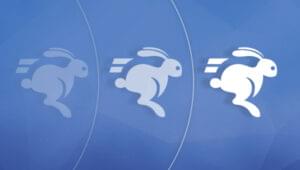Programming

Learn how to analyze large text datasets with LangChain and Python to find interesting data in anything from books to Wikipedia pages.

Step-by-step instructions for an incremental migration of a full-stack cloud native application to OKE Ampere A1 instances with no downtime.

Learn about the benefits of running Node.js applications in Docker containers and how to create a practical development workflow.

Learn about the features that Flask-Login offers and how to use them to create a secure user login functionality for your Python web app.

Learn how AppSignal makes application performance monitoring easy for your Ruby, Elixir, Node.js, frontend JavaScript, and Python projects.

Learn how to maximize web app efficiency by harnessing prefetching, memoization, concurrent fetching, and lazy loading techniques.

Learn what caching is, its benefits, how to set up caching in Django, the backend systems Django supports, and caching best practices.

Learn how Kubernetes can be used by developers to improve the reliability, productivity, scalability, and portability of containerized apps.

Learn how to leverage the OpenAI API and a cloud function to create an application that identifies spelling errors and understands context.

This article compares Node.js and Python for backend development, discussing their key differences, advantages, and real-world use cases.

In this step-by-step tutorial, we walk through how to build a fully-functioning and stylish ChatGPT clone with React and the OpenAI API.

With the use of open-source software on the rise, we preview of some trends you can expect the open-source ecosystem to focus on in 2024.

We review a bunch of the best programming fonts available for free download and for purchase, and how to choose the best one for you.

Learn about the ins and outs of functional testing: its definition, purpose, and the incredible value it offers.

Learn how to use Python and the OpenAI API to perform data mining and systematically analyze your datasets for interesting information.

.NET Blazor is a powerful framework that unifies client-side and server-side development and offers enhanced performance and tooling.

Learn how to fetch data from multiple sources, while still keeping your frontend snappy, by building your own GraphQL gateway.

Discover the Pieces Copilot, and experience the hyper-contextual, on-device, multimodal, integrated future of AI software development.

Learn how to structure Python code by creating modules, defining functions and classes, creating packages, importing modules, and more.

Learn how to migrate a frontend app from Webpack to Vite, including why you should do it, and how to install Vite and update plugins.

Learn what data preprocessing is, why it's important, and techniques for cleaning, transforming, integrating and reducing your data.

Learn what data encoding and decoding are, why they're important, and some of their practical applications in data science.

In this tutorial, Stuart shows you how easy it is to use an HTTP API from Python using a couple of third-party modules.

In this quick tip, Stuart shows you how you can use Python to send emails via Gmail. This can be useful to send status reports, for example.

Learn about the most useful Python string methods for manipulating string objects, with explanations, code examples, and even a challenge.

Learn about URL routing in Flask: defining routes, handling URL patterns, supporting HTTP methods, managing redirects and errors, and more.

Learn how to use Python to read data from and write data to CSV files, and how to convert CSV files to JSON format and vice versa.

Get acquainted with six top AI coding assistants as we investigate their performance, accuracy, and ability to enhance coding productivity.

This deep dive into Flask templates covers rendering, inheritance, layouts, variables, control structures, forms, filters, files, and more.

Learn how to install and set up an app with Flask, a popular microframework for Python that offers an alternative to the much larger Django.